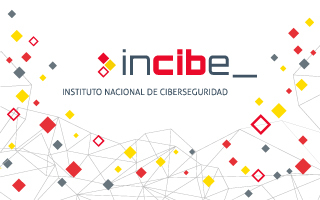

In the digital forensic analysis of Windows systems, artefacts such as event logs, prefetch files, LNK files or the Windows Registry are essential for the investigation of cyber incidents. These artefacts are characterised by the storage of detailed information about system and user activities, allowing the identification of malicious actions, the tracking of attackers' movements and the reconstruction of timelines of critical events. Thanks to these, attack techniques such as command execution, persistence and evasion of system defences can be detected. Knowledge about the collection and analysis of these artefacts ensures accurate and efficient analysis. Therefore, contextualising the relevance of these artefacts helps cybersecurity professionals to strengthen their detection and response capabilities, thus ensuring the integrity of collected evidence and improving the effectiveness of digital forensic investigations.

Nmap (Network Mapper) is a widely recognized tool in the field of computer security and network administration. Its popularity lies in its ability to map networks and detect active services on connected devices. Since its inception in 1997, by Gordon Lyon, Nmap has been one of the most trusted tools for performing security analysis, identifying open ports, and services available on remote hosts. Over the years, the tool has evolved and adapted to the growing demands of the cybersecurity field.

Memory corruption vulnerabilities are critical flaws in programs that occur when software improperly manipulates memory. These failures can allow a program to write data to unintended memory locations or access areas of memory that are out of range.
An attacker controlling this data could trigger unexpected behavior on the system, such as causing the program to crash or, in the worst case, gaining full control over the affected system.
In part, this is because initially computer systems were not designed with security in mind, so the memory addresses used by programs and operating systems were static and predictable. This meant that every time a program was run, memory locations, such as the stack, heap, and shared libraries, were always in the same direction.
This predictability made it easier for attackers to exploit memory vulnerabilities, such as buffer overflows and libc return-back attacks, as they could anticipate exactly where the data or code they wanted to manipulate to execute malicious code would be located. In this article, we will look at how the ASLR technique helps combat these vulnerabilities.

This article aims to present a brief example guide for an implementation of the new standard in a supplier's facilities.
Going through the critical points of the standard, a generic use case will be followed to exemplify how a vehicle manufacturer can adapt its processes to comply with the new standard in an efficient and effective way.
By presenting an overview of the standard and production processes, the aim is to provide a brief guide to serve as a starting point and help avoid common failures in industrial environments when faced with new regulations, such as redundancy of effort, inefficiency in resource management and deficiencies in the application of safety measures.

MITRE Caldera OT stands out mainly for being an open-source tool that allows the simulation of different cyber-attacks in industrial environments. This tool was created by MITRE and CISA (US Cybersecurity and Infrastructures Security Agency), as the experts saw the need to be able to improve and understand cybersecurity in industrial environments without using a high number of resources.
In addition, this tool is designed to be used by both the Red Team and the Blue Team, allowing both teams to collaborate with each other to improve the level of cyber security in these environments.

The digital twins are virtual recreations of real-world objects or processes. This innovative idea, proposed by Dr. Michael Grieves, has become increasingly relevant in various industrial sectors thanks to the advancement of technologies such as 3D modelling, the Internet of Things (IoT), the IIoT (Industrial Internet of Things), machine learning and big data. Its application makes it possible to simulate and analyse physical processes efficiently, thus contributing to the digital transformation of industry, also known as Industry 4.0.
The fundamental purpose of digital twins is to facilitate the understanding of how elements operate in the physical world. For example, in manufacturing, it is possible to create a digital twin of a factory and through simulations explore different scenarios: what would happen if a machine were modified, how would it impact production, and what would happen if a machine were changed? The digital twin provides answers before real changes are made to the physical environment, speeding up decision-making and optimising processes.

The ability to monitor and analyze the behavior of users and entities becomes crucial for early detection and response to potential threats. UEBA solutions identify unusual or anomalous patterns in user behavior, enabling rapid identification of internal threats or external compromises. This post focuses on how UEBA analysis is becoming an essential tool for a cybersecurity strategy, from identifying suspicious behavior to preventing potential security breaches.

The agri-food sector is one of the most critical sectors today because it is one of the most important sectors for the country's economy, as it produces food.
This sector, like many others, is in continuous evolution. An example of this is the automation and digitalization of the many processes that are carried out. These new technologies bring many advantages, such as more efficient processes, less water consumption, detection of possible risks, etc. These great advantages also bring with them some problems, such as increased exposure to cyber-attacks.
Therefore, this article provides some basic knowledge to make the industry aware of the importance of implementing cybersecurity in their technologies.

UMAS (Unified Messaging Application Services) is a Schneider Electric (SE) proprietary protocol used to configure and monitor Schneider Electric programmable logic controllers (PLCs). While it is true that the protocol is related to this manufacturer, the use of the protocol is quite widespread in different sectors, especially the energy sector, as is obvious.
The article will focus on the technical breakdown of the protocol and the use of the protocol. The article will also show weaknesses, strengths and some technical vulnerabilities detected in this protocol.



